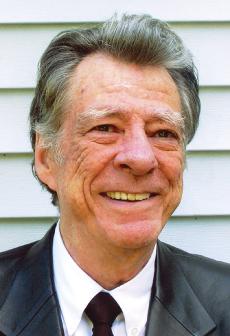Brannan recieves top alumni honor

Brannan recieves top alumni honor
He reported and wrote for a global newswire service, covered major sports stories, was a White House and foreign correspondent, but one story kept cropping up from Jack Brannan’s files – the story of Eva Perón.
Brannan got his first job at theJoplin Globe. Hired by publisher Lang Rogers, 16-year-old Brannan wrote obituaries and visited military recruiter offices picking up tidbits about hometown boys. He enrolled in Joplin Junior College. His sophomore year he was sports editor at The Chart, covering football and basketball.
“By the time I was a sophomore I decided I pretty much liked the newspaper business,” Brannan said.
He graduated from the University of Tulsa and, after two years in the Army, he joined United Press International.
By 1965 Brannan was UPI’s chief correspondent and South American news editor in Buenos Aires, Argentina. On morning as he walked to his office past the presidential residence, La Casa Rosada, he noticed the plaza was littered with tiny slips of paper. A question was written on each slip of paper: “Where is the body of Eva Perón?”
Eva Duarte de Perón had been immensely popular as the wife of former Argentine president, Juan Domingo Perón. Evita was looked upon as a saint by her people, and when she died in 1952 her body was carefully preserved and displayed in a glass-top coffin.
Juan Perón was deposed in 1955. He fled the country, but left his wife’s body behind.
Brannan thought her body had been buried, but his co-workers told him it had been destroyed. Why then were these Peronists asking where it was?
Brannan was intrigued.
He began to look for clues. In the archives of La Prensa he found a brief story, reporting that “The body of the ex-first lady was removed.”
He found the name of the Army officer in charge of that detail, and went to see him.
“I finally convinced him to tell me what happened that night,” Brannan said. “The body had not been destroyed. It had been very secretly moved to Europe where it was buried under a different name.”
His story about the bizarre fate of Evita’s body received world-wide play in newspapers and magazines. But the trail stopped there for the next six years..
In 1971, Brannan was a foreign news editor in UPI’s world headquarters in New York when news came from Madrid that Evita’s body was being returned. She had spent 16 years buried in a convent graveyard in Milan, Italy, under the name María Maggi. The corpse still looked like a porcelain doll, only her hairpins had rusted.
“Eva Perón became a historic figure that I carry around with me,” Brannan said. “She accomplished quite a bit, and the journey she had after she died was no less interesting than her life.”
Brannan has covered many other events during his news career: revolution in South America, the death of Cuban revolutionary Ernesto “Che” Guevara, a killer earthquake in Caracas, the Lyndon Johnson White House and Dean Rusk State Department, two Final Four NCAA basketball championships in 1964 and 1961, and a major league All-Star baseball game in 1960.
“I am curious about things,” Brannan said. “Without curiosity you are nothing.”
Your donation will support the student journalists of Missouri Southern State University. Your contribution will allow us to purchase equipment and cover our annual website hosting costs.



























